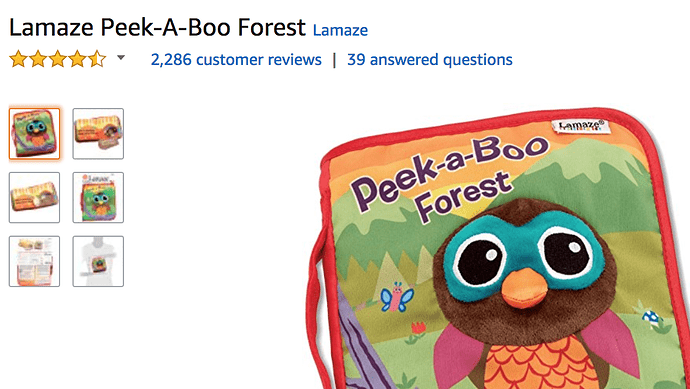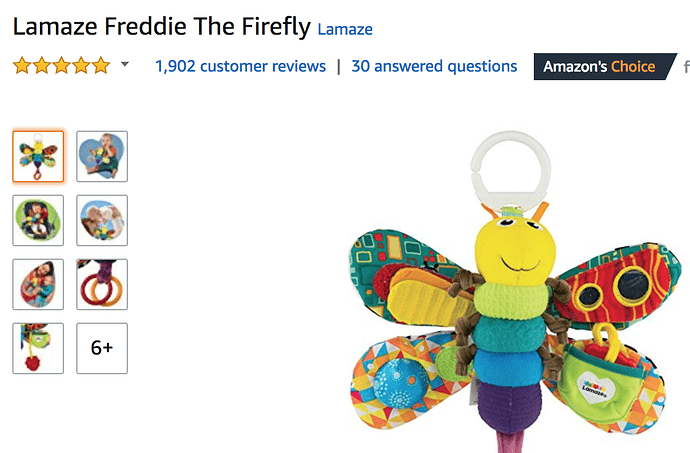Expansion could be in either AP or Karnataka.
As per the below article, Karnataka Govt has cleared the investment of Kitex Garments in Hassan.
Planning to start production by March 2019.
Wonderfull thread and very informative, gone through every thing.
have few questions,
- Does somebody has the US import market size for infant wear.(have read 2-4 reports but every report suggest a different number like $20Bn,10Bn,15Bn etc) what is the recent data.
- If kitex is supplying 600cr worth of goods to US, then who all are or at-least how many of them are supplying the rest, any info related to this will be of great help.
- According to me kitex has a good manufacturing facilities and technology compared to most of them, so going forward kitex might have a good chance of eating market share of those companies. but for this to understand first we need to get data on which all companies are involved in this game…related to US?
- Kitex has not explored new geographies like Europe etc, so what might be the market size and challenges there.
If anyone can help me with this data or atleast relevant data to this , will be of great help.
Referring http://www.lamaze.org/page/shop-for-a-cause, the toys are made by TOMY and KITEX makes the organic apparel range only.
http://www.bseindia.com/xml-data/corpfiling/AttachLive/69c3e79f-deef-4356-8d45-b6d3142d8d82.pdf
Kitex Q3 results. Revenue flat, profit down 44%
Kitex seems to be stuck in a zone for a long time ( business and consequently stock).
Dis: booked out a year back at 500( pre bonus)
I was looking at the managerial remuneration part - MD’s salary including commission was - 1.6 cr including the commission of 1.3 Cr in 2011 . The revenue was 260 Cr and PAT was 20.6 cr however in 2017 MD’s remuneration jumped to a whopping 7.5 cr but the revenue just doubled to 545 Cr . Is this justifiable that the steep rise in the managerial remuneration particularly the MD’s
How about PAT? How much is the net increament on this parameter.
I recently enquired about Kitex to people from kizhakkambalam (the village where Kitex factory is located). Did not get good feedback about Sabu Jacob. Locals don’t like him. They don’t believe he is a good person and the tactics he uses to get control over the panchayath (Kitex support/control a political party called Twenty Twenty). People’s belief is that he supports the party to ensure his business runs smooth. In my view, this is not a good sign and particularly knowing the politics in Kerala this model is not sustainable. People will kick his party out in the next election.
Personally, I wouldn’t bet on a company if the boss is not good. The only group I have full trust in Kerala is on Vguard group/Wonderla. You can see it reflected in the stock price too…
PS: I just shared the information as received. This could be just a perception with the people I talked to.
How many people did you actually speak to? Could they have been politically motivated to provide negative feedback? As investors we need to be able to sift through such bias while concluding.
Well, I was considering an investment in Kitex. Hence did a check. Personally I am not inclined towards Kitex any more… I could be completely wrong, I just don’t want to take a risky investment decision. Just shared the information received. Please analyse further for your investment decision…
To be fair, I always liked the quality of Kitex products available in local shops…
Personal attacks/ political affiliations and irrelevant matters are best avoided here. If you have a reason to believe that the integrity of management is questionable, then you shall bring it to limelight with an adequate proof for the same. All of us in this forum want want to make informed decisions and have no time for anything else.
Disclosure: This post is not intended to hurt anyone’s ego. I’m invested in this company.
See, managerial remuneration is regulated under Companies Act 2013 (Section 197 and 198 to be precise). The details of the same is to be disclosed in the annual report as well.
In case of Kitex, MD is taking home 5% of net profit which is in line with the existing legal frame work in India. The salary being high or low is a matter of perception. We should be more worried about how the company is functioning and how best the management is able to steer it forward.
Invest your hard earned money after adequate due diligence.
Disclosure: Invested in Kitex
Not sure if this was posted here before: http://alphaideas.in/wp-content/uploads/2014/12/Teaching-Note-on-Unconventionality.pdf
The manufacturing facilities of Kitex about 12 miles outside Cochin adhere to the highest
standards of quality, safety, and social compliance in the world. It’s 4,000 workers (most of
whom are young women) enjoy a safe, hygienic, and comfortable environment. They also live
on the campus. Many of them come from villages more than 1,000 miles away. When they
arrive, they are often found to be malnourished. Kitex provides them with tasty, nutritious
food, which I ate when I visited the factory. I also got an opportunity, along with other
stockholders of the company, to see the superbly constructed and maintained factory premises
as well as the dormitories for the women workers.
It is here where Kitex excels. It’s fully compliant, large scale operation (the company can
manufacture about 250,000 pieces of infant-wear every day), its fair treatment of employees,
its focus on automation, and other factors gives it a low-cost advantage over its competitors
which is hard to replicate. For example, given its large business volume, the per-unit cost of
social compliance for Kitex is much smaller than that of thousands of sweatshops, most of
whom simply can’t afford to comply. Kitex will continue to gain market share from them
because— thanks to its low cost advantage — it can charge the same price for its products
than it’s non-compliant competitors and yet earn healthy profit margins.
Another source of Kitex’s competitive advantage is high switching costs for its customers.
Large buyers of garments spend significant amount of time and resources in selecting and
approving vendors. Once a vendor has been selected and approved, then so long as it’s
compliant with quality, safety, and social compliance standards, its very difficult and costly to
switch to another vendor just to save some money.
Besides, there aren’t very many vendors like Kitex out there. There are only 12 companies
of comparable size in the world which can meet the business volume requirements of large
buyers without compromising on quality and safety standards. Kitex is one of them and is
likely to become much larger in the future as its clients give it a higher proportion of their total
sourcing requirements. For example, Carter’s, which is just one of Kitex clients buys garments
worth $1.5 billion every year, while the aggregate revenues of Kitex for FY14 were only about
$75 million. The Annual Report of Carter’s for 2013 states: “We source products internationally, primarily from Asia. One sourcing agent currently manages approximately 70% of our inventory purchases… Our goal is to shift the mix of our direct sourcing from approximately 30% in fiscal 2013 to 50% by 2017 in an effort to improve the performance of our supply chain.”
As gigantic customers like Carter’s, Toys“R”Us, Gerber, and The Children’s Place divert
more of their sourcing requirements to Kitex, I expect the company’s revenues and earnings
to grow manifold over the next decade.
I was also very impressed by all the metrics that Kitex had shown over the last few years. It was just like another page industries. But when I saw the share price, it had only one way to go from Rs750 odd to now Rs225. Now that in itself is not a problem as shares could go up and down anytime and this is also backed by some of the best value investors. What bothered me is the loss of focus from management. I think they are more interested in politics which never
Mixes well with business. Heritage and sun tv are good examples. Also, what bothered me more was that they supposedly sell their merchandise in amazon which had all of 13 reviews. I mean come on, I could personally get 13 reviews just from my friends. A supposedly multimillion potential company with just 13 reviews does not sound very appealing in this age and time. I don’t even want to get started on the only six items they had on sale in amazon!! Add to that falling profit and sales besides being zero debt and having world class facilities. Now the only thing I could question is the management’s focus for this underperformance. I could be very wrong and this could be a million dollar stock. But personally, I did not buy the story and booked a loss from a purchase price of Rs290 to a sale price of Rs230. My portfolio allocation was not much so the loss was manageable.
-
Please explain how politics and business do not mix well. Is the management doing some illegal leveraging to boost their business? If the management quit tomorrow, will your conviction suddenly take a UTurn?
-
Kitex sells to companies like ToysRUs and Carter’s. They have as much physical presence (Like BabyFeet in India) as they have online presence. Besides, when you purchase from giants like these, you don’t really stop to see the brands they sell. You assume that the big brand is promise enough. Kitex is a B2B business. ToysRUs and Carter’s are the B2C business.
-
Logically thinking, nobody buys their kids’ clothes online, at least not often. They want to feel the quality of the clothes before buying, since kids’ clothes can be a sensitive matter. Along this, we should ideally look at any offline customer’s review of ToysRUs and Carter’s (Clothes). They mostly source from Asia (From their Annual Reports) and Kitex is one of the biggest.
If there is a choice, I feel it is better to back a non political affiliated group rather than a political affiliated group. Politics in India is dirty. Also there is a lot of vendetta in politics. But mostly, this takes managements focus out of issues affecting the business as they need to divide their time between politics and business now.
But the reason I sold was mostly related to price and recent quarterly performance. It is seemingly on a free fall and growth was stagnant over the last 3 years. Now the profit also halved in the most recent quarter. They are not shareholder friendly like some others as There are no quarterly investor presentations. As a retail shareholder it is more of a hope for me about their growth plans and performance. I felt that there is an opportunity cost staying with this stock and therefore switched.
This article was the reason I searched for kitex in Amazon.
Kitex sells online too, but the major source of their revenue is from their B2B business.


